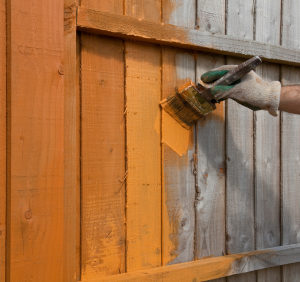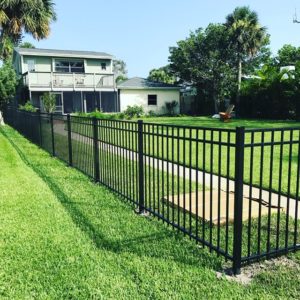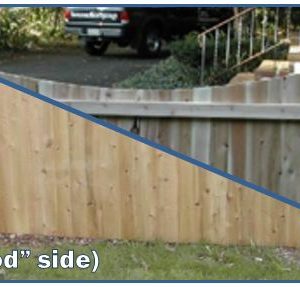Ivy growing along a fence creates a beautiful green wall that’s attractive for any garden. Flowering vines such as clematis and honeysuckle are also popular choices. The texture and depth added by beautiful vines growing along a fence may be the perfect addition to your yard.
But, before we get carried away, many property owners also fear to plant vines that grow along their fence. After all, vines are also known for being quite aggressive. Will even fence-friendly vines take over your yard and ruin your fence forever? Here are some common types of fence-friendly vines and some pros and cons to planting them.
Common Fence-Friendly Vines
Not all vines grow easily on fences. Here are some that do:
Tendril Vines
These are the vines that create small spiraling tendrils that reach out and wrap-around thin objects to hold themselves up. Some typical examples are grapes, clematis, morning glories, and trumpet vines.
Twining Vines
Twining vines, on the other hand, twist their stem around thin supports as they grow. Jasmine and honeysuckle grow in this way.
Clinging Vines
These vines attach to vertical surfaces with ease, using suction cups on the rootlets to connect to wood, brick or another surface. Some examples are Boston ivy and Virginia creeper.
As you can see, depending on the type of fence you have, these vines may or may not easily attach and grow without much effort on your part. Chain link fences are a great growing space for tendril and twining vines. However, traditional wooden or vinyl fences will need to be modified, or you’ll need to install an additional support system to grow tendril and twining vines.
So, what are the pros and cons of growing these vines on your fence?
Pros
Appearance
One of the most critical factors is that the vines will add depth, greenery, and beauty to your yard. This is especially important if you have a chain-link fence, which while economical, isn’t as attractive as some other types of fencing.
Shade and Privacy
A vine will offer additional coverage on your fence, creating more obscurity. In addition, the vine will cover in any holes or breaks in the fence, ensuring you can enjoy complete privacy. This is especially true for aluminum fences or fences made from other metals.
Aroma
Some vines like honeysuckle give off a sweet, lovely smell when it’s flowering.
Cons
Damage
The most apparent disadvantage when growing a vine along a fence is that it may damage the fence. Clinging vines, in particular, can create stains on wooden fences. Wooden fences, in general, are more susceptible to harm as vines can hold in moisture, accelerating rot. To avoid damage to wood fences, choose annual non-woody vines like morning glory or climbing nasturtium. Heavy vines like wisteria can quickly weigh down any fence that doesn’t provide the proper support.
When in doubt, you can always purchase a trellis or arbor for more massive, more demanding vines that could damage your fence. However, many lighter, beautiful vines are perfect for adorning a fence. Most wooden fences can adapt to a support system for tendril and twining varieties of vines.
A wisely chosen fence-friendly vine can enhance the beauty of your garden without harming your fence. Speak with your local friendly fencing experts at Professional Grade Fence about any questions you have. We look forward to serving you soon.









